Amin Soltani, Peter Mills, Kathyrn Tyson, Ashka Jhaveri, Brian Carter, and Johanna Moore
The Iran Update provides insights into Iranian and Iranian-sponsored activities abroad that undermine regional stability and threaten US forces and interests. It also covers events and trends that affect the stability and decision-making of the Iranian regime. The Critical Threats Project (CTP) at the American Enterprise Institute and the Institute for the Study of War (ISW) provides these updates regularly based on regional events. For more on developments in Iran and the region, see our interactive map of Iran and the Middle East.
Key Takeaways:
- Palestinian militias continued attacks at their usual rate from the Gaza Strip into Israel while IDF airstrikes targeted Palestinian militant groups affiliated with Hamas in Gaza.
- Militants in southern Lebanon and Iranian-backed militants, including Lebanese Hezbollah, conducted nine attacks as part of an ongoing attack campaign targeting IDF radar and sensor sites and military targets. The IDF also intercepted two drones traveling from Lebanese territory north of Haifa.
- The Islamic Resistance of Iraq—a coalition of Iranian-backed Iraqi militias—may have expanded the locations of its attacks against US forces in Syria.
Gaza Strip
Palestinian militias continued attacks at their usual rate from the Gaza Strip into Israel on October 23. The al Qassem Brigades—Hamas’ militant wing—claimed responsibility for six direct and indirect fire attacks, including two drone attacks, on IDF military positions in southern Israel.[1] Saraya al Quds—the militant wing of Palestinian Islamic Jihad (PIJ)—claimed responsibility for another five mortar and rocket attacks.[2] The Abu Ali Mustafa Brigades—the militant wing of the Popular Front for the Liberation of Palestine—claimed mortar fire targeting IDF units.[3]
Hamas is trying to use hostages as leverage to allow humanitarian aid and fuel into the Gaza Strip. Hamas claimed that it released two elderly hostages for humanitarian reasons after mediation from Egypt on October 23.[4] Hamas leader Khaled Meshaal said Hamas would release civilian hostages if Israel reduced its airstrikes into the Gaza Strip.[5] The Wall Street Journal reported that negotiations over releasing a group of 50 hostages broke down after Israel demanded that Hamas release all hostages as a prerequisite for permitting fuel to enter the Gaza Strip.[6] Hamas could use fuel and other aid supplies to support its efforts to defend against an IDF ground operation. Hamas still holds more than 200 hostages.[7] Hamas spokesman Abdul Latif al Qanou framed a possible IDF ground invasion into the Gaza Strip as an opportunity to kill and capture IDF soldiers on October 23.[8]
Recorded reports of rocket attacks; CTP-ISW cannot independently verify impact.
IDF Major General Michael Edelstein stated that Israel has evidence of Iranian involvement in Hamas’ October 7 attack.[9] Edelstein stated that Iran assisted Hamas with training in the Gaza Strip but refused to elaborate further.[10] Iranian officials have invited Hamas militants to training camps in Iran in addition to assisting the group in manufacturing missiles and rockets.[11] Iran has developed smuggling routes across the Levant to transfer weapons and rocket manufacturing material to Hamas and evade Israeli interdiction. CTP-ISW previously assessed that Iran would likely provide material and financial support to its proxies to fight Israel rather than get directly involved in the Israel-Hamas war.[12]
IDF airstrikes continue to target Palestinian militias allied with Hamas in the Gaza Strip. The al Aqsa Martyrs' Brigade announced on October 23 that the commander of its Rafah Brigade died during the ongoing war with Israel.[13] IDF airstrikes previously killed a commander affiliated with Saraya al Quds and the head of the military wing of the Popular Resistance Committee in Rafah on October 12 and 19, respectively.[14] CTP-ISW previously reported on October 21 that the IDF faces a loose coalition of Palestinian militant groups in the Gaza Strip—rather than just Hamas.[15]
Recorded reports of rocket attacks; CTP-ISW cannot independently verify impact.
West Bank
Hamas’s efforts to expand the war to the West Bank remain mostly unsuccessful. CTP-ISW only recorded one demonstration on October 23 after a high of 11 demonstrations on October 20.[16] The rate of clashes between Palestinian militants and Israeli forces in the West Bank is consistent with the number of clashes on October 22, after the rate dropped by half from October 21 to 22.[17] CTP-ISW recorded nine distinct clashes.[18]
Palestinian militants ambushed Israeli forces in response to Israeli raids against Palestinian militants. Tulkarm Brigades fighters used improvised explosive devices (IED) and small arms to attack Israeli forces in Tulkarm during an Israeli ground operation.[19] Other Palestinian militants fired small arms targeting Israeli forces during raids in Bethlehem and Jazloum IDP camp.[20]
This map is not an exhaustive depiction of clashes and marches in the West Bank.
Southern Lebanon and Golan Heights
Iranian-backed militants, including Lebanese Hezbollah (LH), conducted nine attacks as part of an ongoing attack campaign targeting IDF radar and sensor sites and military targets. LH claimed responsibility for attacking four IDF positions along the northern Israeli border.[21] Attacks on Israeli towns and military positions continued along the entire border and into the disputed Sheeba Farms.
The IDF intercepted a drone traveling from Lebanese territory north of Haifa.[22] CTP-ISW has observed nine instances of drones flying into northern Israeli territory and three in Haifa Province since October 7. It is unclear whether any of the drones are armed or meant for surveillance. Haifa is one the most critical business centers of Israel and the port handles nearly 50 percent of Israel's freight volume.[23] Independent analysts have noted that Iran is especially interested in threatening the petrochemical facilities in Haifa given that the spread of fumes could maximize casualties.[24] The IDF furthermore maintains several military sites in the vicinity of Haifa.[25]
The LH-affiliated Lebanese Resistance Brigades announced the death of two of its members during unspecified duties for the first time since October 7.[26] The Lebanese Army, in coordination with the UNIFIL, retrieved the bodies from the outskirts of Kfarshouba north of Shebaa Farms.[27] LH Secretary General Hassan Nasrallah proclaimed the creation of the brigade in 1997. The group enlisted primarily non-Shia Lebanese with a shared commitment to Lebanon and its unity and national defense.[28] Several Iranian-backed militias, including Hamas and PIJ, are participating in the attack campaign against Israeli forces from southern Lebanon. LH almost certainly permits attacks from southern Lebanon given the extent to which LH controls southern Lebanon and coordinates with the other Iranian-backed groups operating there.
Recorded reports of rocket attacks; CTP-ISW cannot independently verify impact.
Iran and Axis of Resistance
The Islamic Resistance of Iraq—a coalition of Iranian-backed Iraqi militias—expanded the locations of its attacks against US forces in Syria on October 23. The Islamic Resistance in Iraq claimed two one-way drone attacks targeting US forces in Syria, marking the sixth consecutive day of attacks targeting US forces in the Middle East. The Islamic Resistance of Iraq has claimed 11 drone and rocket attacks on US forces in Iraq and Syria since October 18. These attacks are part of the Iranian-led effort to deter the United States from providing meaningful support to Israel, as CTP-ISW previously assessed.[29]
- The Islamic Resistance of Iraq claimed that it fired two drones targeting US forces at the al Tanf Garrison and al Rukban camp in eastern Syria on October 23.[30] The Islamic Resistance of Iraq last targeted al Tanf Garrison on October 19.[31] The group said that the drones “hit their targets” and released a video of the attack.[32] US Pentagon Press Secretary Pat Ryder confirmed that there was an attempted drone attack on al Tanf Garrison that did not cause any injuries to US personnel.[33] Ryder said that US defense systems at al Tanf Garrison intercepted two drones, possibly referring to the attack on al Rukban.[34] Al Tanf Garrison is approximately 18 kilometers from al Rukban.The Islamic Resistance of Iraq claimed a one-way drone attack targeting US forces at al Malikiyah military base in northeastern Syria on October 23.[35] This attack marks the first time the Islamic Resistance of Iraq claimed that it targeted US forces at al Malikiyah. The group said that the drones “hit their targets.” US Pentagon Press Secretary Pat Ryder did not confirm the attack on Malikiyah but said that the United States is still conducting a “comprehensive overview” of the October 23 drone attacks.[36]
Hundreds of Iranian-backed foreign fighters have deployed to border areas with Israel, according to a report from the anti-Syrian regime outlet Syrian Observatory for Human Rights (SOHR) on October 23. Unspecified SOHR sources said that hundreds of Iranian-backed fighters from Iraq, Syria, and the Afghan Fatemiyoun Division have deployed to the border areas near the Golan Heights along the southwestern Syrian border since October 21.[37] CTP-ISW has tracked the movement of Iranian-backed militants to southwestern Syria since the war began on October 7.[38]
Iranian officials and media are continuing their attempts to deter an Israeli ground operation into the Gaza Strip while also attempting to reassure their domestic and Axis of Resistance audiences that such an operation will fail. IRGC-affiliated Tasnim News Agency outlined the “significant challenges” that Israel will face in conducting a ground operation into the Gaza Strip, highlighting Hamas’ anti-tank capabilities.[39] Iranian state media similarly argued that Israeli Prime Minister Benjamin Netanyahu’s senior advisers fear Hamas and further outlined several “challenges” facing Israeli ground operations into the strip, including declining public support, weakened relations with the Arab world, a high military death toll, and the potential for a geographic expansion of the conflict.[40] IRGC Deputy Commander Brigadier General Ali Fadavi similarly warned that Israel would suffer a “disgraceful” defeat at the hands of the Palestinian resistance were it to enter the Gaza Strip during an interview IRGC-affiliated Fars News Agency.[41]
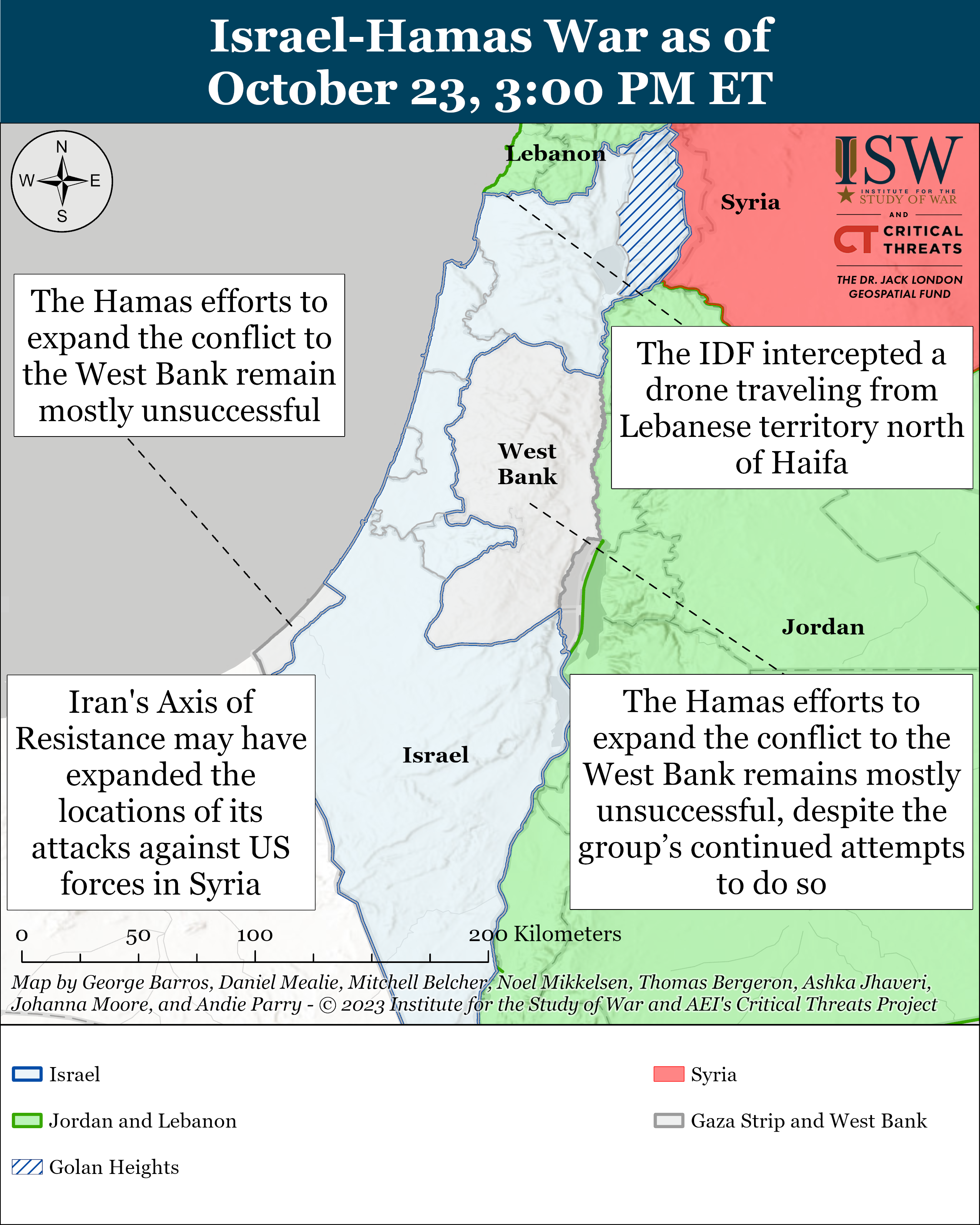
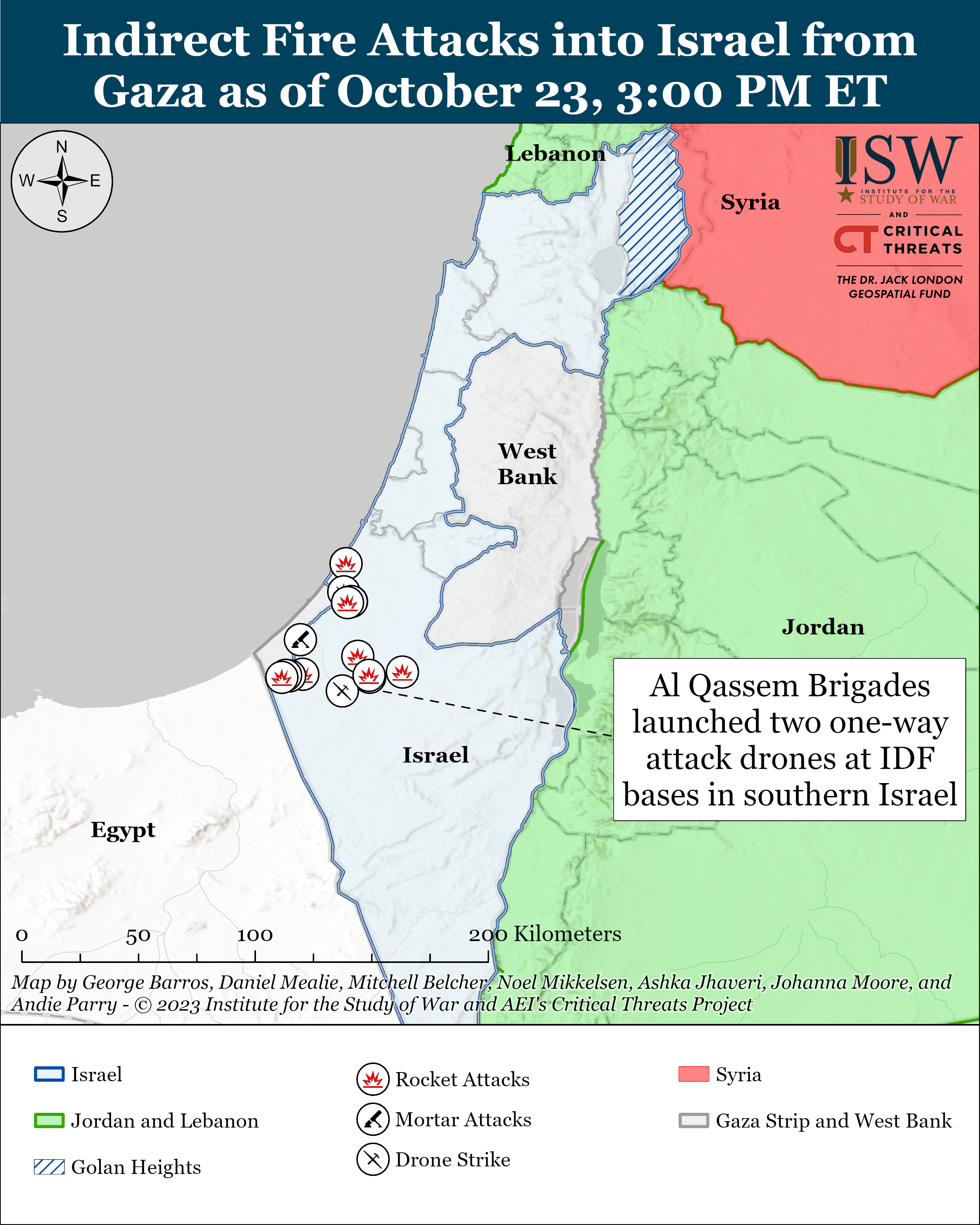
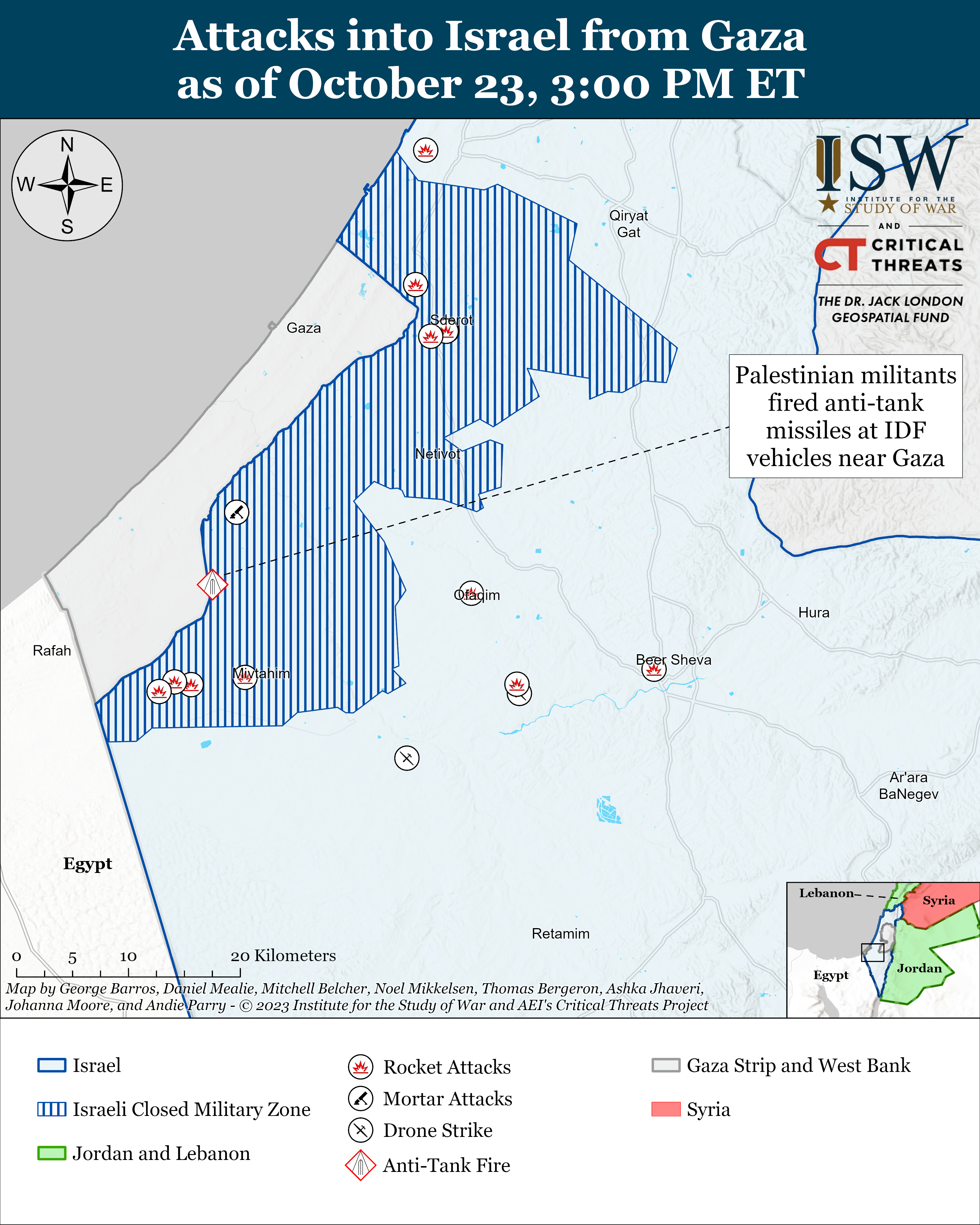
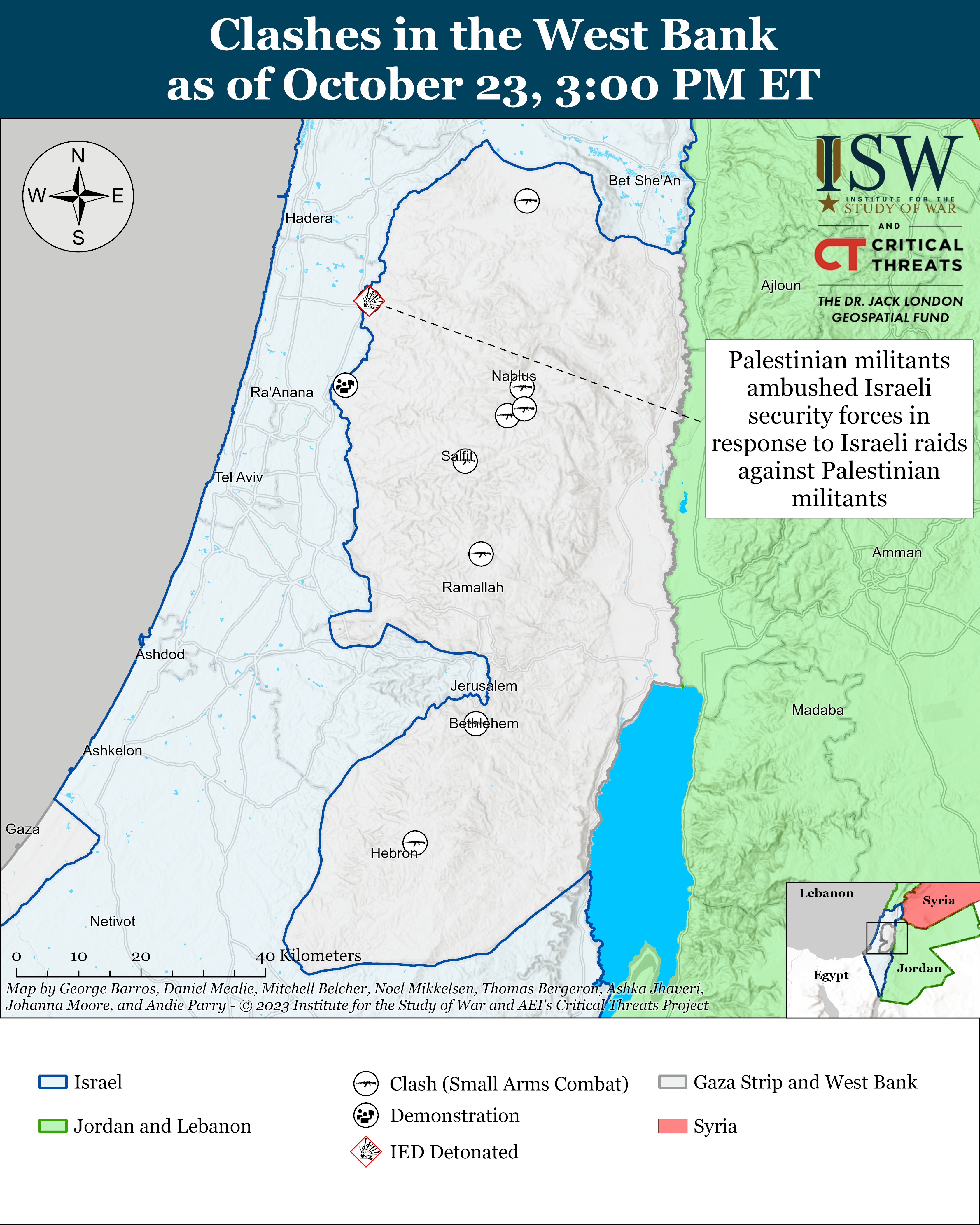
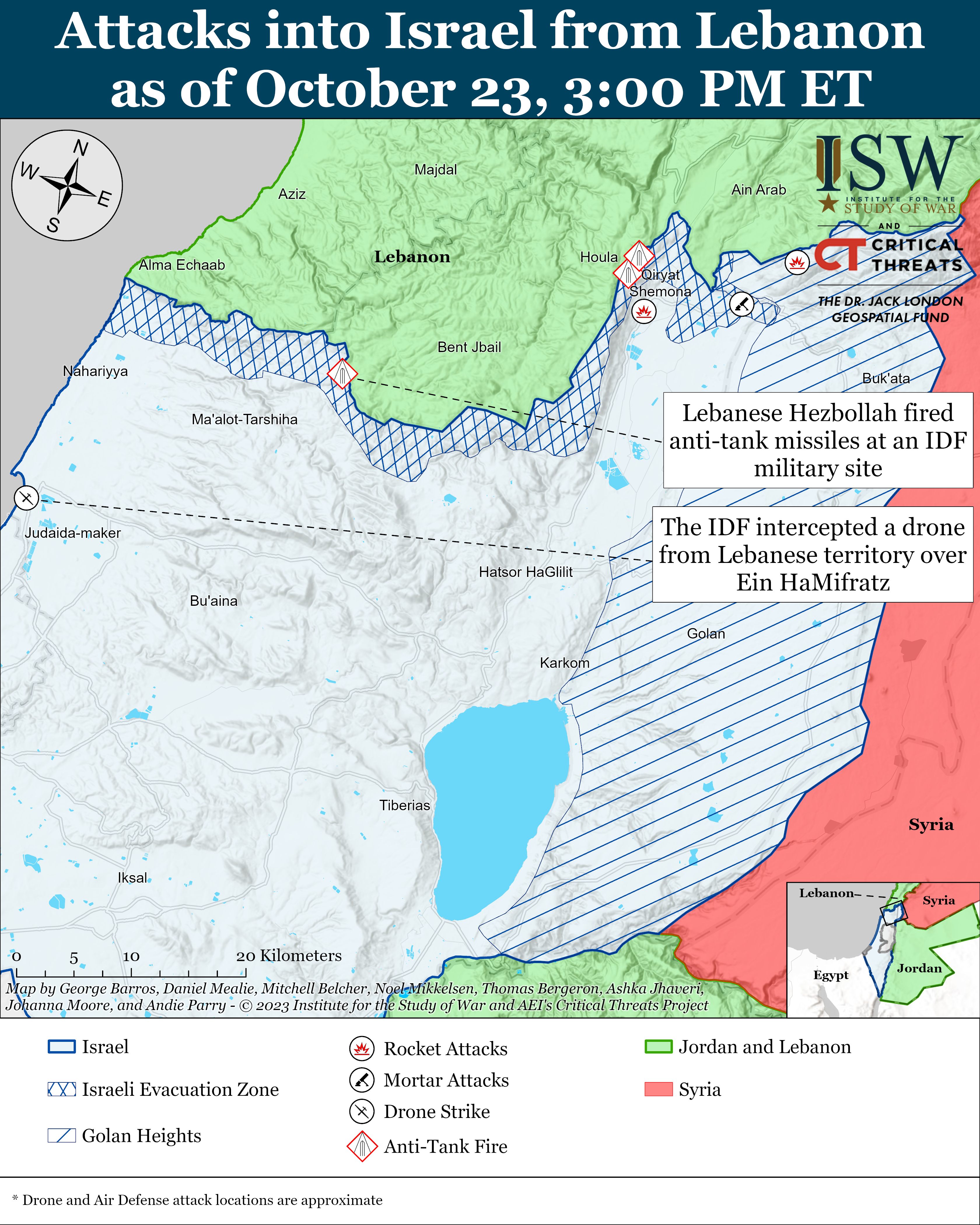
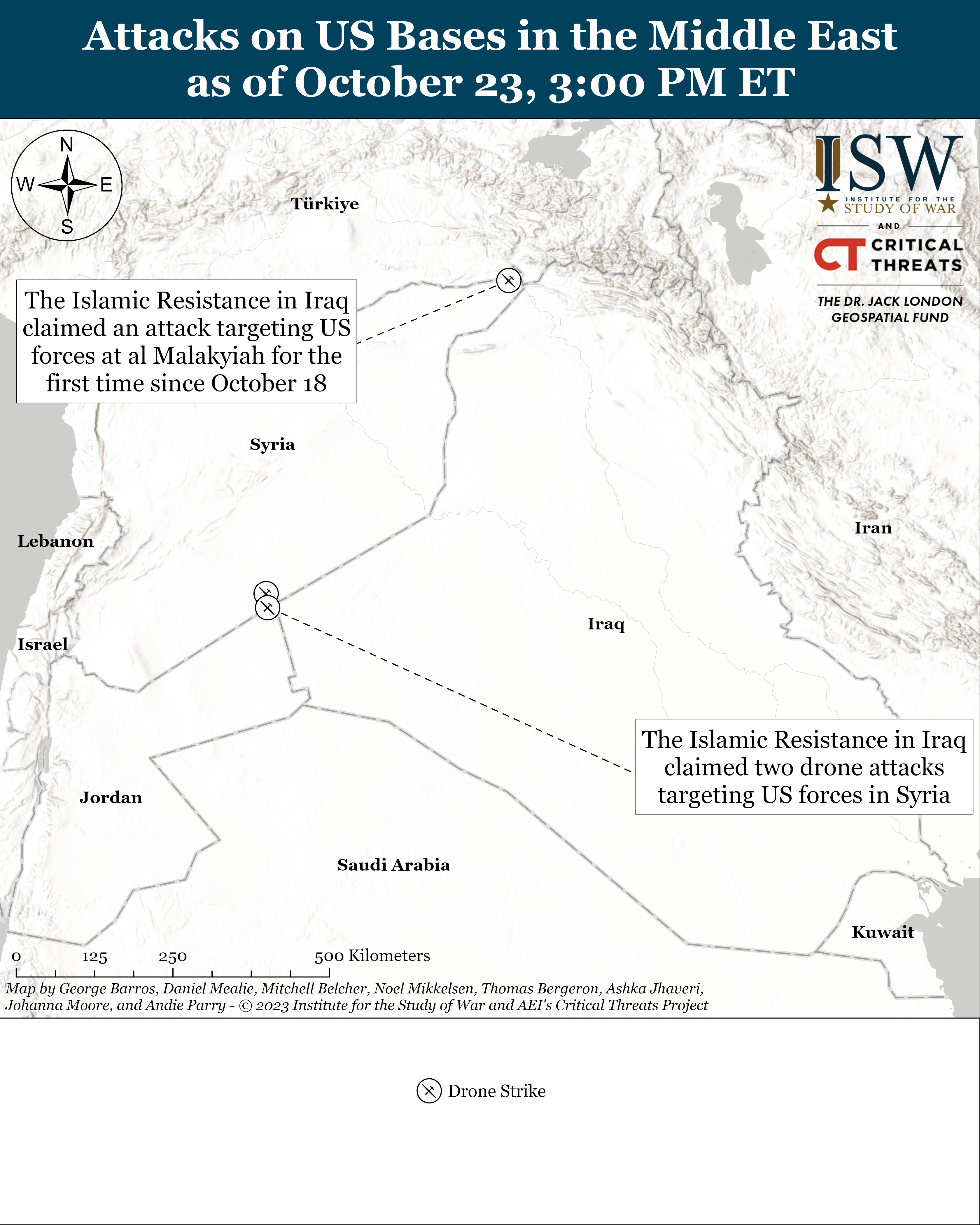
No comments:
Post a Comment